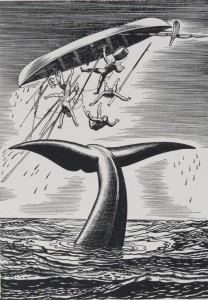
Say my name, say my name...
We’re deep into apple season now, and over the past few weeks, as Jason and I gulped big glasses of cider with dinner and munched on Empire apples from our farm share, a snippet of a lecture I once heard on the radio kept coming back to me. The speaker was an apple crusader by the name of Creighton Lee Calhoun Jr. I use the term “crusader” rather than, say, “enthusiast,” because Mr. Calhoun is a man with a mission: to save as many antique apple varieties as possible in the name of genetic diversity.
Back in the 19th century, the apple scene in America was very different. It was brimming with apple varieties, some good for eating, some for cooking, some for making applejack. And when I say brimming, I’m not talking about the few dozen that you’re probably able to name—there were thousands of varieties, over 16,000 by some estimations, in the late 1800s. But as family farms gave way to mass agriculture, all but the heartiest, most transportable, most eye-pleasing varieties were gradually lost. There are still about 3,000 varieties, but the vast majority of them are like endangered species, available only from specialty orchards.*
To illustrate his point, Mr. Calhoun often gives audiences a list of extinct apple varieties and, without telling them what they are, asks them to scan the list for their last names. That’s how genetically diverse American apples once were: almost every family could claim their own apple variety. I was dying to know—did my family have an apple? Had it survived? But since I’d heard Calhoun’s speech on the radio rather than in person, I didn’t have a copy of his extinct varieties. So I headed down the Google rabbit hole, trying to discover my ancestral apples.
Coming from farm stock and having been raised in Johnny Appleseed territory, I thought my chances were pretty good. Of my four grandparents, two had come from farming families, though one of these seemed more likely to have a tobacco variety named after them. My paternal grandfather’s line, with their farm in Cadiz, Ohio, was the most likely to hit the apple jackpot, I thought, and carried the bonus of sharing my maiden name, so I started hunting for Dunlap apples.
Weirdly, I felt a little nervous while I was searching. What if Dunlap apples were lousy? What would that say about us as a clan? I doubted that Mr. Calhoun would agree with this line of thought, but what if your family apple was like a horoscope? Continue reading →
 Shannon and I were visiting my brother and his wife last week, giving me an opportunity to play further with greens. Their CSA delivered them a clutch of beautiful orange, yellow, and purple carrots. Andrew is all about his carrot greens, which is convenient since they’re super high in potassium, Vitamin K, magnesium, etc. We also had on hand a bunch of beets, so I tore the greens off of them (high in Vitamin A, as well as K) and tried to figure out what to do. Andrew and I then came up with the following, Thanksgiving-inspired dish.
Shannon and I were visiting my brother and his wife last week, giving me an opportunity to play further with greens. Their CSA delivered them a clutch of beautiful orange, yellow, and purple carrots. Andrew is all about his carrot greens, which is convenient since they’re super high in potassium, Vitamin K, magnesium, etc. We also had on hand a bunch of beets, so I tore the greens off of them (high in Vitamin A, as well as K) and tried to figure out what to do. Andrew and I then came up with the following, Thanksgiving-inspired dish.





